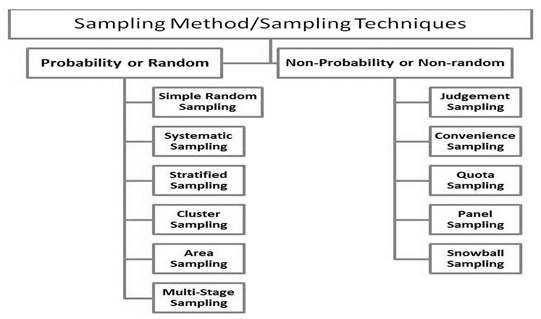- NEED HELP? CALL US NOW
- +919995411505
- [email protected]

1. Increasing the sample size has the following effect upon the sampling error?
A. It increases the sampling error
B. It reduces the sampling error
C. It has no effect on the sampling error
D. All of the above
Answer. B
The sampling error can be reduced by increasing the sample size.
2. Sample is regarded as a subset of?
A. Data
B. Set
C. Distribution
D. Population
Answer. D
Sample is a representative of the study population
3. Among these, which sampling is based on equal probability?
A. Simple random sampling
B. Stratified random sampling
C. Systematic sampling
D. PopuProbability samplinglation
Answer. A
Simple random sampling utilizes random selection from population is ready available and homogenous so that everyone will get an equal chance
4. The difference between the expected value of a statistic and the value of the parameter being estimated is called a:
A. Standard error
B. Bias
C. Systematic sampling
D. Non-sampling error
Answer.B
The bias is the difference between the expected value of the estimator and the true value of the parameter. If the bias of an estimator of a parameter is zero, the estimator is said to be unbiased: Its expected value equals the value of the parameter it estimates. Otherwise, the estimator is said to be biased.
5. Of the following sampling methods, which is a probability method?
A. Judgement
B. Quota
C. Simple random
D. Convenience
Answer. C





